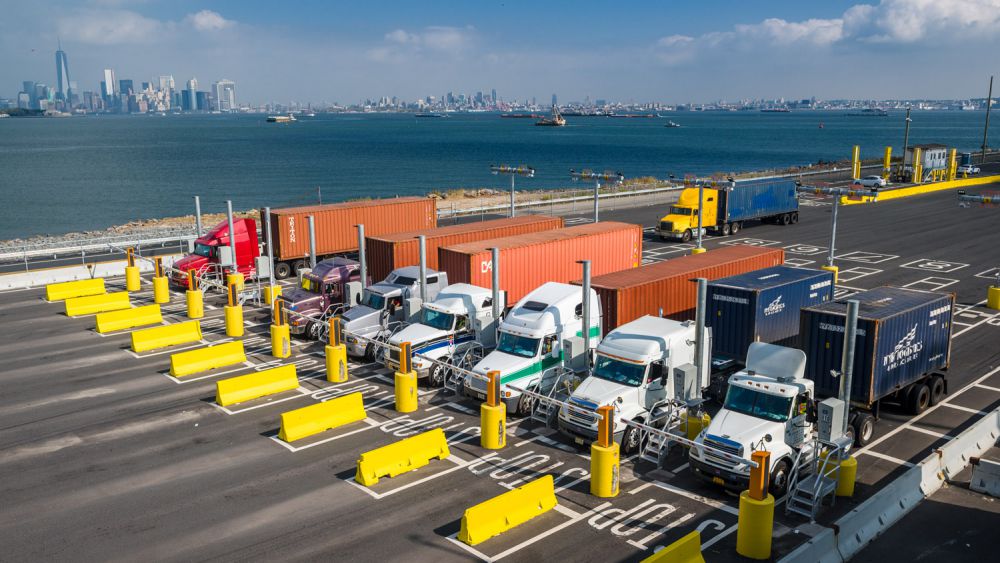As VGM Takes Effect, U.S. Terminals Offer Weights

The new SOLAS Verified Gross Mass container weighing regulation will go into effect on Friday – and in the United States, it appears the rollout may well occur without the disruption and delay that many had feared. The overwhelming majority of the nation's largest container ports and terminal operators have agreed to provide truck scale weights for VGM use, allowing business at the busiest facilities to continue uninterrupted.
The U.S. Coast Guard ruled in late April that any proper weight taken for domestic compliance reasons - notably OSHA rules, which have long required that outbound boxes "shall be weighed to obtain the actual gross weight, either at the terminal or elsewhere" – would satisfy the U.S. application of SOLAS VGM. As terminals already generate these weights using truck weighing scales at the gate, and already communicate them to the carrier, the carrier and shipper can use these weights to satisfy the requirement – if everyone in the process agrees.
On June 16, Chairman of the Federal Maritime Commission Mario Cordero published an open statement to ocean carriers threatening regulatory action if they did not accept the existing terminal-generated weights for VGM purposes. "Why anyone would add procedures, requirements and costs to doing business is not only puzzling, it raises the specter of anticompetitive behavior and necessitating Commission action," he said. The following day, the Ocean Carrier Equipment Management Association, which represents most of the large container carriers calling in the U.S., said that its 19 members would accept terminal weights. The group had already announced exploration of a similar measure: "Under the OCEMA Terminal Weighing Approach concept, U.S. ports and marine terminal operators could weigh containers moving through their truck gates and provide the gross container weights directly to ocean carrier stowage planners. VGM obtained in this way would be forwarded by the marine terminal operator on the shipper’s behalf directly to the ocean carrier for use in vessel stowage planning,” OCEMA said in a statement in May.
Many terminal facilities had previously reserved the right to turn away unweighed containers at the gate, citing concerns that boxes without a VGM would become a legal and logistical liability; however, as of June 30, most major U.S. terminals appear to have decided to use some version of OCEMA's approach.
John Cushing, a spokesman for Pierpass – an association for terminals at the ports of Los Angeles and Long Beach, the largest ports by TEU in the United States – said that no member terminal had any plans to turn away unweighted containers arriving by truck. Trailer chassis-borne containers "will be weighed as they historically have been," he said, and the weights will be transmitted to the carriers for use at each carrier’s discretion. Containers arriving by rail will be handled on a terminal by terminal basis.
The Port of Oakland, Port of NY&NJ, the Northwest Seaport Alliance, South Carolina Ports Authority, the Georgia Ports Authority, the North Carolina State Ports Authority, the Port of Houston Authority, the Port of Virginia, Port Everglades and Baltimore's Seagirt terminal have all indicated they will provide similar weighing arrangements. The participating facilities include nine of the top 10 U.S. container ports by TEU.
Outside of the U.S., "some sort of disruption is likely," said an industry source close to stakeholder talks, citing training and operations changes, conflicting information and wide variation in national governments' implementation; many terminals operated by international firms like DP World or APM Terminals will offer weighing, but compliance may be difficult in remote or less-developed regions of the world. The IMO has called for a soft roll-out, emphasizing stakeholder engagement and practical implementation as opposed to strict enforcement as industry gets used to the new arrangements.
The opinions expressed herein are the author's and not necessarily those of The Maritime Executive.
